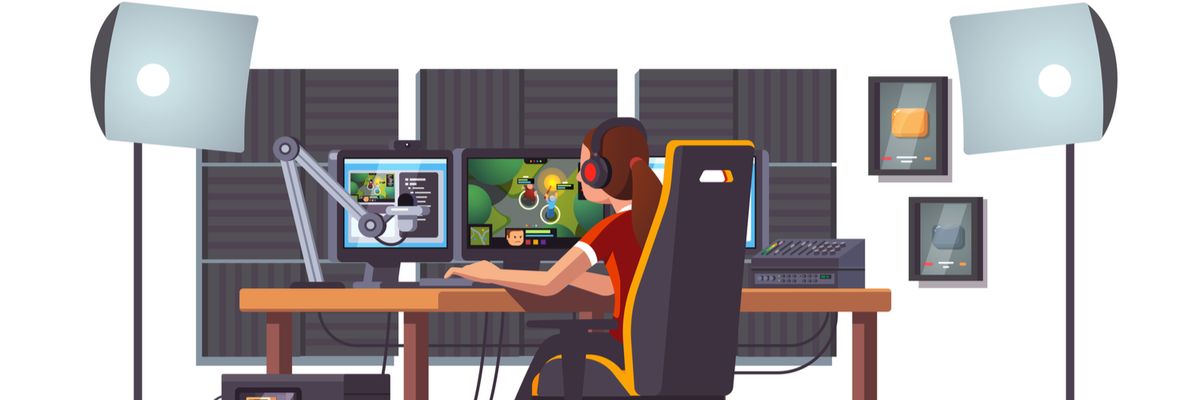Most of us have now seen a clip or video on Twitch or YouTube with gaming influencers – whether it’s how to hone your skills in Minecraft or figuring out how to improve your gameplay in Fortnite.
A few years ago, only a niche online community was aware of these content creators. Although brands have been working with gaming influencers steadily over the past few years, the pandemic propelled these creators to another level as everyone turned to platforms such as Twitch and YouTube to keep themselves entertained during lockdowns.
Gaming influencers are not like your “typical” influencers, and there are several factors that need to be taken into account when considering working with talent in this space to ensure success for your campaign.
Brand fit and objectives
The first thing to do is to make sure that the influencer and the platform they use are the right fit for your brand and the goals and objectives of your campaign. It is important to keep in mind when selecting influencers for your campaign that you don’t just look at their reach (subscribers/followers), although important, a brand should focus on metrics that will deliver a successful ROI for your campaign.
For example, Tyler “NINJA” Blevins became one of the first high profile gaming influencers and was highly sought for by many brands, but now, even though he is still a household name, brands now know that there are a lot more gaming influencers out there that could be a better fit for them.
Driving results and success when working with gaming influencers relies heavily on brand affinity. Gaming creators look for partnerships where they have an affinity for the brand because they want the partnership to be seamless and organic to be able to keep their audiences engaged. Their followers get to know the creator over time, and if a brand partnership does not seem organic it can have a negative effect for both the brand and the creator.
Creative freedom
This leads to the subject of creative freedom and involving talent in the development of a brand campaign. If a brand is new to the gaming space and is unsure of how to fully make a partnership with a gaming influencer a success, then engage the selected influencer at an early stage and collaborate with them to develop creative ideas that fit your campaign. By allowing them to use their own creativity they will know how best to organically deliver the message to their audience and that authenticity will provide the best way to engage and develop a campaign that will deliver results.
Engaging creators in the development of campaigns is what has led to the marketing process evolving over the past few years from a brand awareness play, where it was just a logo rotating on stream to fun and unique activations. A great example of this was CaptainPuffy’s recent partnership with the Olympics where she did a live stream with Olympic Gymnasts Nile Wilson and talked all things Olympics and played the official game for Beijing 2022.
Multi-platform targeting
Another thing to consider when working with gaming influencers is that they typically have a presence across multiple platforms, therefore establishing a longer-term partnership that has the potential to provide an opportunity for sustained awareness and better engagement.
For example, if a creator has a presence on Twitch, YouTube, and other social media platforms, a 30-day partnership will provide continuous brand awareness on Twitch via branding, shout outs and on stream activations, amplification to drive the audience to their live stream via social media and an opportunity for custom content on YouTube.
Understand your KPIs
Like any marketing campaign, it is important to set success KPIs for the influencer at the start of the partnership so that they know what the aim of the campaign is, eg. brand awareness, drive to purchase, downloads, etc. The KPIs for your campaign can vary depending on the platform and should focus on meaningful metrics which show true engagement and reach of the creators and the impact they may have on your bottom line.
For example, if your goal on Twitch is to reach as many viewers as possible, then do not make the mistake of looking only at CCV (concurrent average viewers) but look at their views gained and unique viewers to better understand how many people you will reach. Additionally, hours streamed over the last 30 days can also be a good indicator of the impact of your campaign, especially when it comes to driving results. However, if you are doing a one-hour sponsored stream, then of course this stat then becomes irrelevant.
In many cases, you might prefer to look at watched hours as a key metric, indicative of how engaged streamers’ audiences actually are – there is a big difference between the performance and power of influencers when a viewer watches many hours of their favourite streamer for obvious reasons. One stat that remains important always is unique viewers however this stat can only be provided from the personal dashboard of the streamers and not from the Twitch publicly available API.
As the gaming industry continues to grow, brands will increasingly look to gaming influencers as an opportunity to diversify and innovate their marketing strategy beyond the traditional ways, to one that makes them relevant and engages consumers on platforms where they consume their content on a daily basis.








